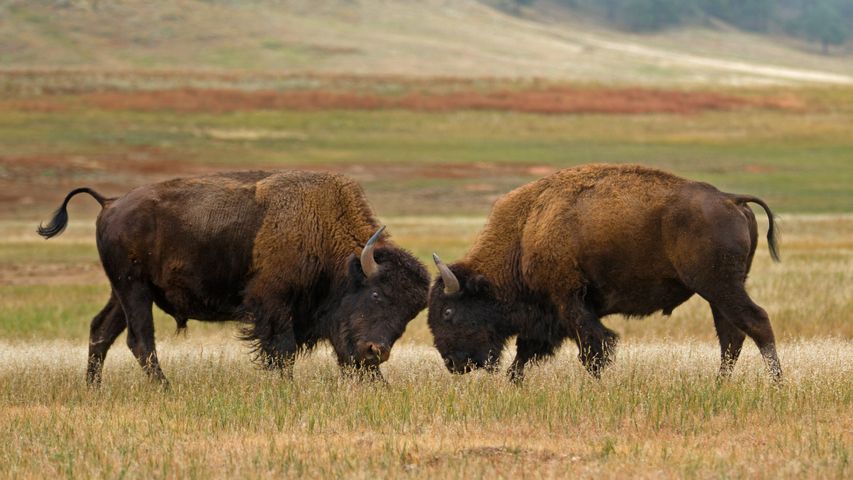Male muskoxen near Prudhoe Bay in Alaska
© Oliver Smart/Alam
Going head-to-head with winter
Muskoxen are built to chill. These animals can endure, even thrive, in some of the harshest conditions on Earth—the Arctic winter. Their long, wiry outer coat covers a soft and thick inner layer, called qiviut, that keeps them toasty even as temperatures plummet. When winter ends, the muskoxen shed this undercoat, which is collected and spun into yarn that's warmer than sheep's wool and softer than cashmere—pricier, too.
Muskoxen, named for the strong odor the males emit during the rutting (mating) season, have roamed the tundra eating roots, mosses, and lichen for thousands of years. In the 1920s, they were hunted almost to extinction, and were totally wiped out in Alaska. But thanks to a reintroduction program, today there are roughly 5,000 muskoxen in Alaska, out of an estimated 125,000 animals worldwide.
Related Images
Bing Today Images




 Scottish Blackface sheep, Aberdeenshire, Scotland
Scottish Blackface sheep, Aberdeenshire, Scotland
 American bison in Yellowstone National Park, Wyoming
American bison in Yellowstone National Park, Wyoming
 African elephants in Tsavo East National Park, Kenya
African elephants in Tsavo East National Park, Kenya
 Flock of Swaledale sheep in North Yorkshire, England
Flock of Swaledale sheep in North Yorkshire, England
 Southern white rhinoceros males, Shamwari Private Game Reserve, South Africa
Southern white rhinoceros males, Shamwari Private Game Reserve, South Africa
 Elephant family in Amboseli National Park, Kenya
Elephant family in Amboseli National Park, Kenya
 Wildebeests in the Maasai Mara National Reserve, Kenya
Wildebeests in the Maasai Mara National Reserve, Kenya
 Bison in Wind Cave National Park, South Dakota
Bison in Wind Cave National Park, South Dakota


